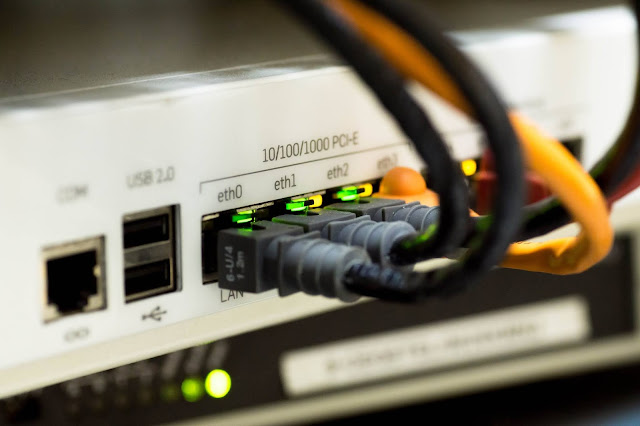Types of Area Networks Explained
There are many different types of computer networks, and they all consist of two or more computers that are interconnected to share resources and information. Devices can be linked through cables or wirelessly. Most businesses have a network administrator that has undergone Network+ training and can design, implement, and maintain functional and secure networks. Have another certification? You could still get into this line of work with Security+ certification, there are some key differences you should know. Read on to learn more about each type of area network and the best use for them.
Local Area Network (LAN)
A local area network is the most common and simple network design used by businesses and homes. There is an unlimited number of devices that can be connected to the network as long as they are in the limited geographical area such as a residence, school, laboratory, university campus or office building. Stationary devices are connected with ethernet cables, while everything else can be connected through wireless access points (WAPs). A local area network is quite secure as it is a private network, especially when set up by a skilled network administrator or network engineer.
When to use a LAN:
- Many users needing to connect in one location
- Devices and resources need to communicate directly with one another, transferring data
- Want to control your network without any external governance
When not to use a LAN:
- To connect users across vast areas
- If public or unknown users will be accessing your network
Wireless Local Area Network (WLAN)
A wireless local area network is similar to a LAN, except there are no ethernet cables to connect devices. Everything is done wirelessly, which means everyone in the area has access to it and that can cause some security concerns.
When to use a WLAN:
- Mobility of devices while connected is important
- Devices don’t support a wired network
- There are more devices than number of ports on router or switch, and no additional switches or routers can be connected
When not to use a WLAN:
- Security is the top priority
- Consistent and stable performance is important
- Data transfer rates exceed those available through wireless technologies
Metropolitan Area Network (MAN)
A metropolitan area network is larger than a LAN but smaller than a WAN; ownership is either a single person or company. They consist of several LAN interconnected with point-to-point high-capacity backbone technology of packet switching and optic cables. Large universities and companies with locations spread over a large geographical area tend to use MANs. These can also be ISPs such as Telus or Shaw that the general public use in their homes.
When to use a MAN:
- You have devices spread over a geographical region that need to communicate directly with one another
- You have the ability to implement and maintain connectivity, wired or wireless, between each location
When not to use a MAN:
- You have cost restrictions and are unable to provide infrastructure such as fibre optic cables for such large distances
Wide Area Network (WAN)
A wide area network is a computer network of multiple interconnected LANs connected through telephone lines, cables, and radio waves across a large geographical area. A great example of a WAN is the internet, users connected across the world through infrastructure owned and maintained by multiple administrators. Businesses will also use WANs to connect across the globe in a private network instead of using the public internet network.
When to use a WAN:
- When you have devices that are spread further than the reach of WLAN, WAN can reach different continents
When not to use a WAN:
- Cost of implementation is important
- Consistent performance is priority, WAN can have fluctuations in performance and speed
Storage Area Network (SAN)
A storage-area network is a dedicated high-speed network that connects shared pools of storage devices to several servers. These networks do not need to rely on any WANs or LANs, they are accessed in the same way someone would connect to an external drive. Types of SANs include converged, virtual, and unified. Technologies used include fibre channel HBA cards and fibre channel switches. SANs are extremely secure as no one else has access but the business or individuals who are connected to the SAN.
When to use a SAN:
- Multiple devices need access to and share resources that are available on one or more storage device
- Centralized storage is a requirement
When not to use a SAN:
- Tight budget, high upfront cost to establish a SAN
- Resource constrained, additional maintenance and upkeep required
Enterprise Private Network (EPN)
An enterprise private network is a custom-design network built and operated by a business to share company resources. It connects a company’s offices across different geographic regions and is optimized to ensure that bandwidth-centric applications run smoothly without burdening the network.
When to use an EPN:
- Need secure communications between two locations that don’t have direct connectivity between one another
- Resources need to be shared securely to people across various locations
- Need room for scale and growth of the network
When not to use an EPN:
- Resource and time constrained as EPNs take time and resources to set up, update, and maintain
- Redundant links between locations aren’t possible, as this will introduce additional failure points to the network
Other Networks:
- Virtual Private Network (VPN)
- Passive Optical Local Area (POLAN)
- System-Area Network (SANS)
- Campus Area Network (CAN)
- Personal Area Network (PAN)
Get started on the infrastructure career path with a CompTIA Network+ certification with 5-day boot-camp style classes with TechnoEdge Learning. Be sure to explore our other cybersecurity courses to help you get started on your IT career journey such as CompTIA A+ training, Security+ training, and CySA+ training.
Written by: Lindsay McKay



Comments
Post a Comment